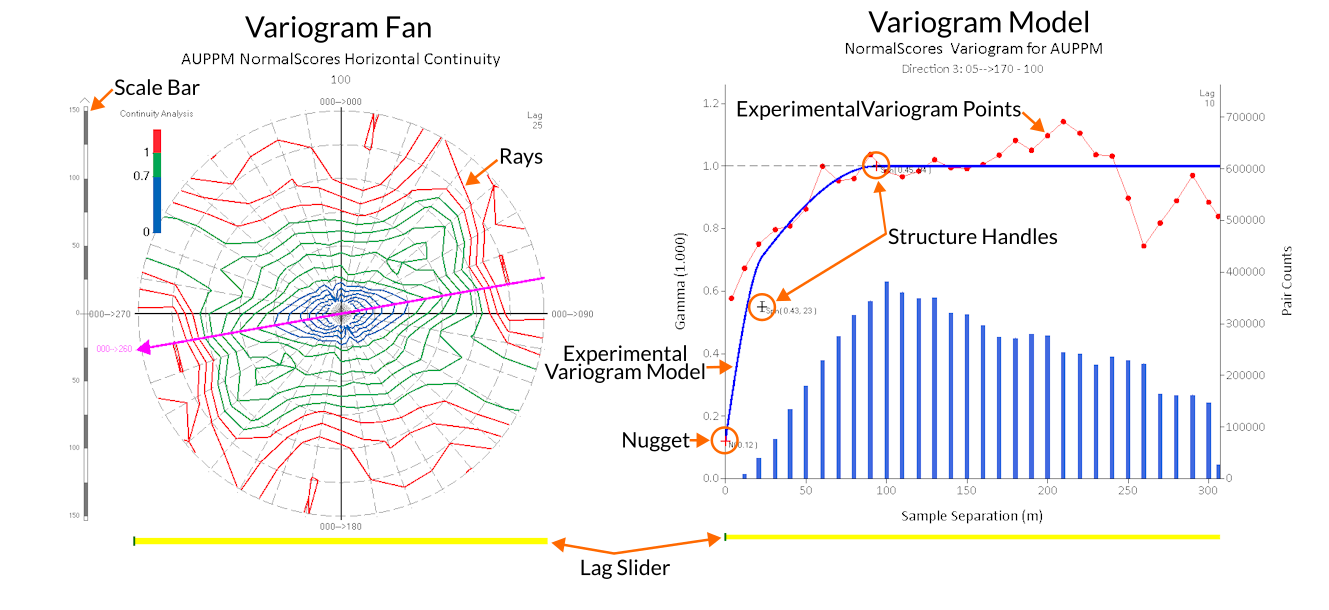Introduction to Variography
Variography is a spatial analysis technique that is carried out in order to understand how sample values relate to each other in space, which can then help to infer the similarities between known samples and a point that has not been sampled. A variogram is essentially a scatterplot that plots the average variability for all sample pairs at a certain distance apart (Y-axis)against that separation distance (X-Axis).
Variograms can be calculated either purely by separation distance or by separation distance and direction. If direction is not taken into account and all sample pairs at a given separation distance are used in the calculation of the average variability, it is referred to as an isotropic or omni-directional variogram. If direction and distance are used to select sample pairs, then it is referred to as a directional variogram.
When calculating variograms, the separation distance (denoted by h) is referred to as the lag distance. When calculating directional variograms, the lag is defined by both the distance and direction vector (for example 10 m north–south). The gamma symbol (ɣ) is the standard symbol for variability in a variogram. On the variogram we plot a point ɣ(h), being the average variability (or variogram value) of all sample pairs separated by vector h. When repeated for a series of lags we can populate the entire variogram plot. The separation distance at which the sill is reached is called the range or range of continuity and indicates the distance at which there is no longer correlation between the samples.

This activity guides you through creating variogram fans, selecting the direction of continuity, and configuring variogram models.
| Next » |

